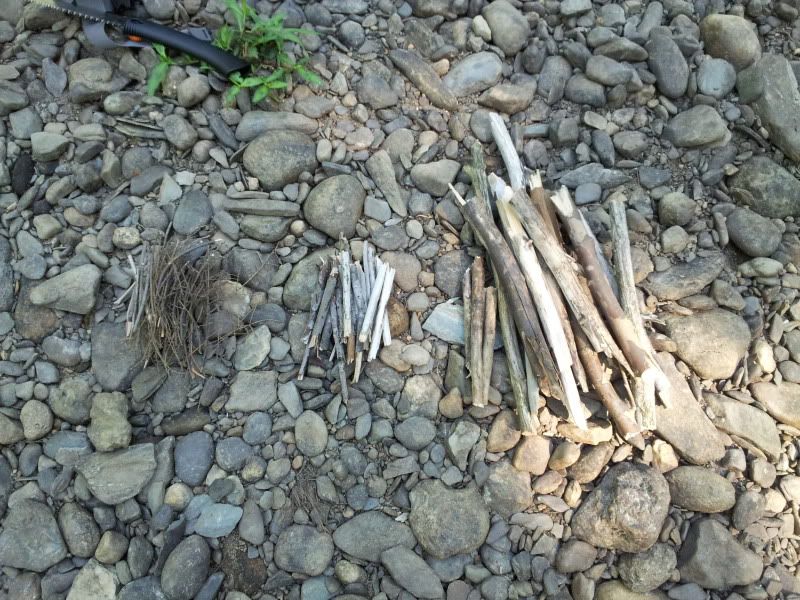First, I have an older Mountainsmith Lumbar pack I use as my main dayhike pack. I purchased shoulder straps for it, to keep it from pulling my pants down. I prefer the lumbar pack as its slightly cooler than a traditional backpack. But, I am actually looking into a canvas rucksack, for a more traditional look. We will see...
Anyway, the contents (in no particular order):
2 water bottles. I have a Nalgene bottle, and a NATO water bottle. I also have a NATO cup, that I can use to boil water in, or cook in, as needed.
A Gerber saw-for, well, cutting wood...
A Heatsheet survival blanket. These are MUCH tougher than the myar ones. A little more expensive, but worth the additional couple of bucks, in my opinion
A notebook, with a pen and a pencil. For taking field notes.
10' of brass hobby wire. This is for making snares, should the need arise, or, more likely, making shelters or repairing gear.
Folding diamond sharpener. For touching up my knives.
20' of cotton line-for making shelters, marking trails, etc.
50' of 550 cord. This is for making shelters, tying things-it has a myriad of uses.
Cammenga military compass. I ALWAYS carry a compass-I have tried civilian compasses, and find I am more comfortable with this version, even though it is MUCH heavier than a civilian one.
Garmin GPS-a small wrist top GPS, in case I want to map my trek, or a quick reference for a grid of where I am.
Leather work gloves-for handling hot pots, going through brambles-pretty much anything you would need gloves for.
Cordage kit. This is 6 separate pieces of 550 cord, each about 5' long, and a 2 strand braided twist of 550 cord, about 15' long, for use as a ridgeline.
a 6x8' tarp, for shelter. Either worn, if needed, or in making a shelter.
A large plastic bag, to keep my maps and documents in.
A Suunto Vector wristwatch, with cobra knot cordage for the wrist strap (that I made).
First Aid kit-bandaids, meds, etc. In a waterproof container.
My emberlit stove-for, well, a stove.
Sea to Summit spoon, for eating.
(Not shown) Water purification tabs.
A little microfiber towel. I carry a yellow one, so that it can also serve as a signalling device.
Condor Bushlore beltknife, in a handmade leather dangle sheath.
Firesteel.com Ranger firesteel. Probably the best one I have used yet.
Swiss Army Knife Farmer. I got this for both the saw, and the awl, which I use as my firesteel striker.
I have a full ration kit that I take-it contains oatmeal, ramen, some non cook snacks, coffee, and cocoa.
Shemagh, which is just an oversized handkerchief. This is such a useful piece of kit, I wouldnt go without it.
I also carry a jacket, rainjacket, or something for inclement weather. The LAST thing I want, if I get stuck out overnight, is to be stuck without some sort of jacket. I use a heavy wool shirt, in the picture below, which serves well for 5 months out of the year. As I am often working with fire, I prefer natural materials, as they dont burn. But, I usually stick to wool, as cotton sucks when its wet.
All of this easily fits into the lumbar pack, as shown. Its easy to carry, and, should something happen, I have enough gear to spend a night or two out, if needed. I cover shelter, water, and fire. I have signaling devices, and navigational aids. I even carry food. Anything I may need, I can fabricate. As my skills get better, my load will certainly decrease.
This is the lumbar pack, full:

The contents:












